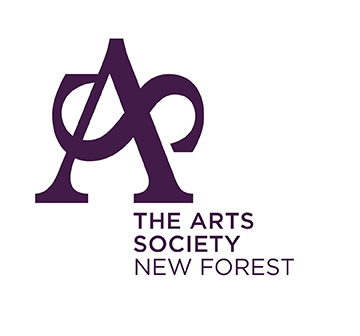‘William Hogarth: A Terrier Snapping at the Heels of the Great’
A lecture by Rosalind Whyte. 11.09.2023
What an interesting introduction to start the new year for the Arts Society New Forest. Rosalind spoke about William Hogarth FRSA, who was an English painter, engraver, pictorial satirist, social critic, editorial cartoonist, and occasional writer on art.scardo. (1759)
He was born in Smithfield, in November 1697. His father invested in a Coffee House where people met to converse, with access to pamphlets and newspapers. The business failed and he went to debtors’ prison for five years, which left a lasting impact on his only surviving son.
William was apprenticed to an engraver in Leicester Square. He would walk to work every day, giving him a chance to learn about the mores of London. He set up a business as a copper plate engraver in 1720 and joined the St. Martins Lane Academy. When that disbanded he went to Sir James Thornhills Free Academy in Covent Garden in 1724. Sir James Thornhill was serjeant painter to the King. The Painted Hall Greenwich was decorated by Sir James, payment made on completion. Sir James disapproved of the developing relationship between William and his daughter, Jane who modelled for him (see portrait below). The two eloped but by 1731, they were all living together.
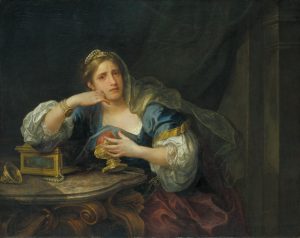
Hogarth became a prominent figure in the London art scene and was influenced by politics, art, literature, and the theatre. In 1735, William was instrumental in pushing through parliament the Engravers Copyright Act. In 1740, he painted a full-length portrait of Sir Thomas Coran, which he donated to the Foundling Hospital. William and Jane had no children but were great supporters of the Hospital; he designed the foundlings’ uniform. Hogarth intended this portrait to inspire British artists to produce what he called ‘mighty portraits’ to rival their continental counterparts.
Rosalind analysed his self-portrait, The Painter and his Pug]featuring his dog, Trump. X-ray study reveals that the portrait was originally created with Hogarth wearing more formal attire. The dog is indifferent to the painting, to the books and to the painting palette which shows Hogarth’s ‘Line of Beauty/Grace’, an advertisement for his forthcoming book, ‘Analysis of Beauty’.
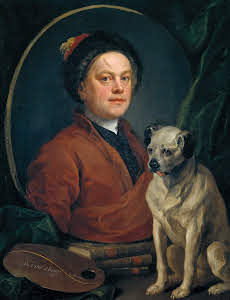
The Painter and his Pug (1745)
William was to produce a large body of work, engraving, historical paintings, self-portraits.
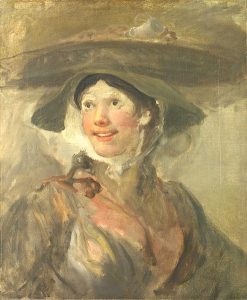
‘The Shrimp Girl’ (1745) National Gallery.
Hogarth is best known for his series of paintings of ‘modern moral subjects’, of which he sold engravings on subscription. Rosalind discussed examples from the Beggar’s Opera (1731), A Rakes Progress (1734) and Marriage a la Mode (1743), his first attempt to satirise the upper classes.
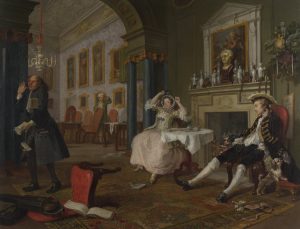
Marriage a la Mode
Beer Street and Gin Lane (1751) are two prints issued in support of what would become the ‘Gin Act’.
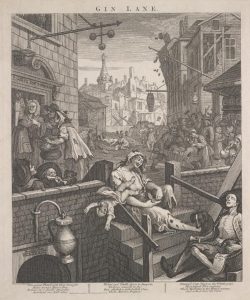
Hogarth’s work was an accurate portrayal of London lifestyles, threaded through with humour and despair, alluding maybe to his own earlier experiences while living in the debtor’s’ prison.
A great friendship existed between Hogarth and David Garrick.
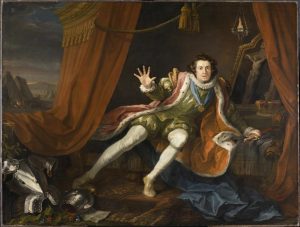
David Garrick as Richard III (1745) Walker Art Gallery, Liverpool
His health suffered in 1760, not helped by criticisms of his work by disgruntled objects of his satirical wit, such as Charles Churchill portrayed in The Bruiser (1736) Royal Academy of Arts.
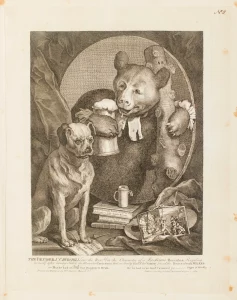
He died in 1764 and was buried in Chiswick Old Cemetery. His wife was a British print seller and businesswoman, who successfully continued to produce and sell his work for many years.
Hogarth’s work was popular and could be found on the continent. His determination and stout middle-class values made him one of the most innovative artists of his generation and he brought art to the common man for the first time in history. His influence has been felt down through the years, including satirists such as Gilray.
